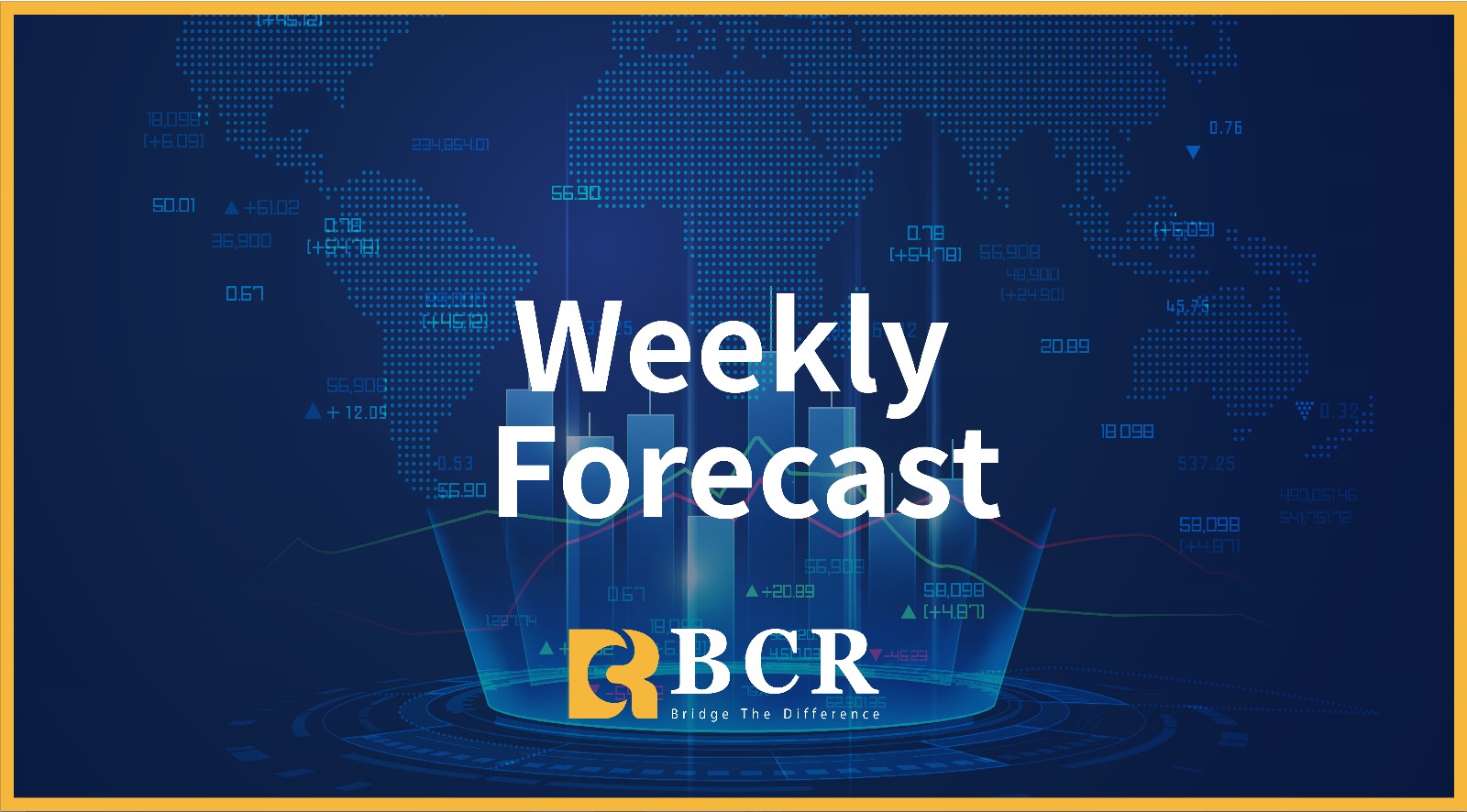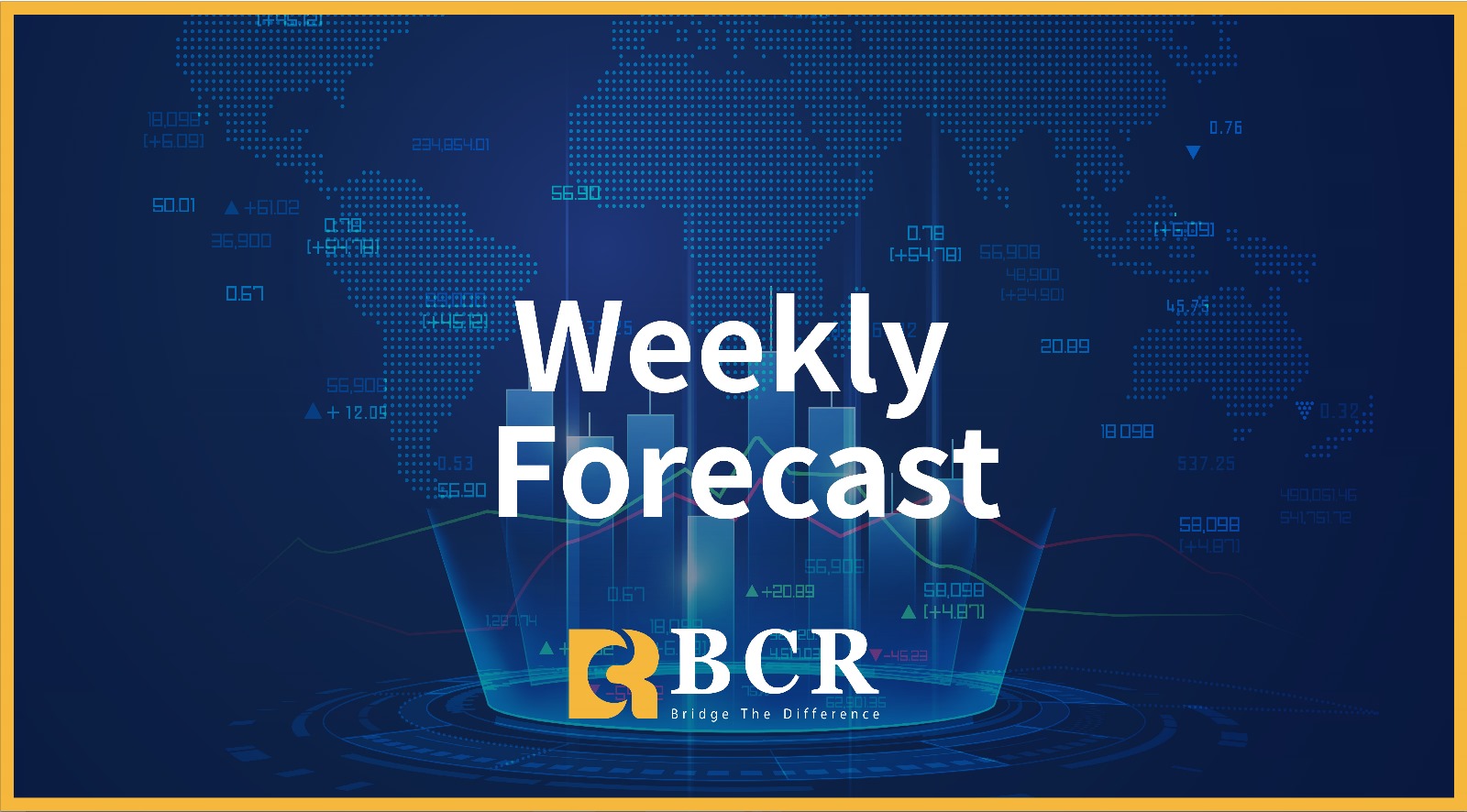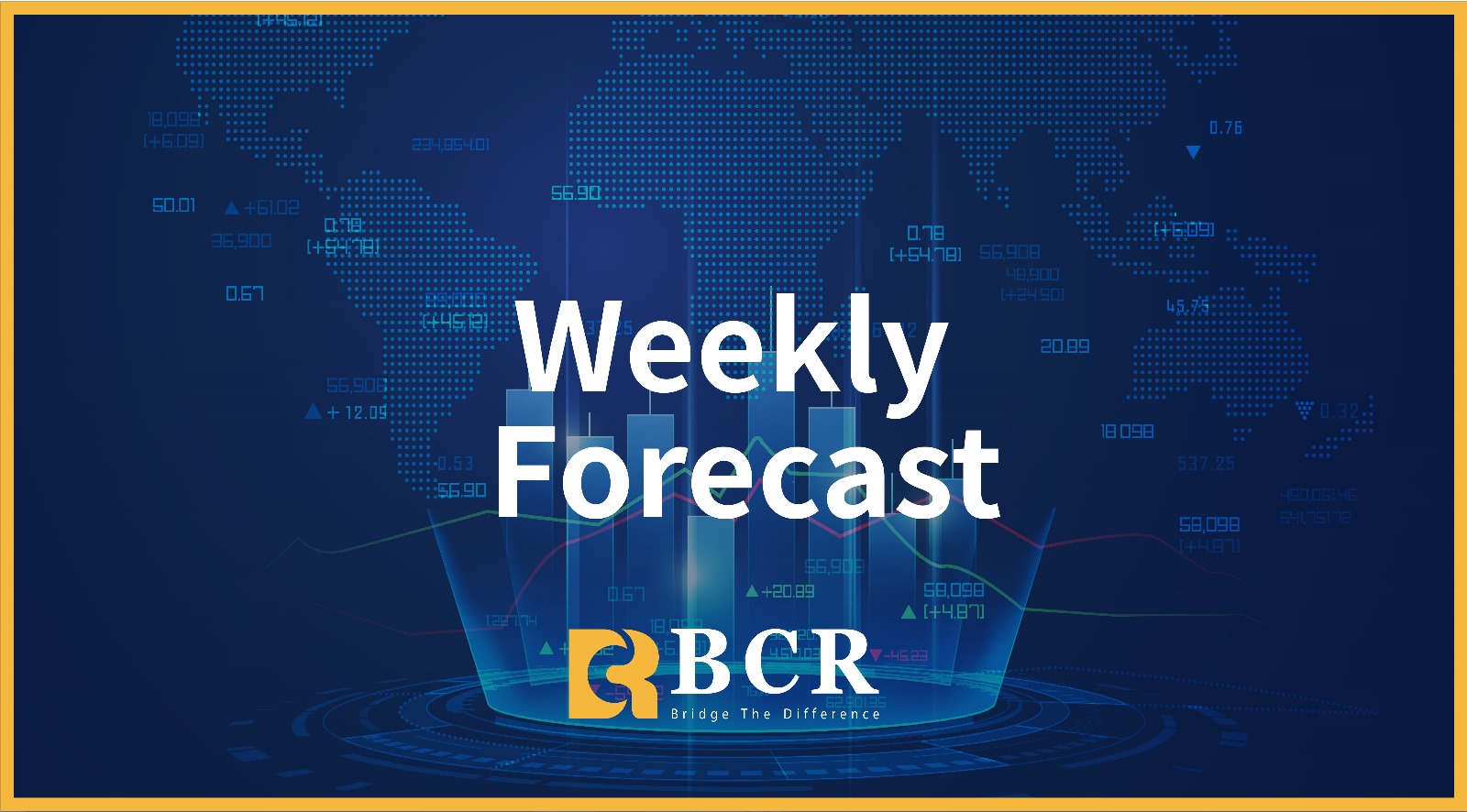





0
The recent tightening sentiment stems primarily from hawkish comments from the Federal Reserve. With several hawkish officials repeatedly emphasizing the "lack of clean data" as a constraint on further easing, market confidence in a rate cut this year has been rapidly eroded: the implied probability of a December rate cut has plummeted from 90% before the October meeting to 27%.
On the fiscal front, the US Congress just passed a bill extending federal government funding to January 30th, but this is more of a "delay" and does not fundamentally eliminate the risk of another shutdown. Coupled with the early market closures and decreased liquidity due to Thanksgiving and Black Friday next week, the impact of single data points or news on prices will be amplified. "False breakouts" and sentiment-driven volatility will become more frequent, presenting both opportunities and traps for short-term traders, while medium- to long-term investors need to avoid being "washed out" by short-term noise.
Geopolitically, the focus is on the US-mediated peace deal between Ukraine and Russia. Substantial progress in negotiations is expected to boost overall risk appetite, while the attractiveness of traditional safe-haven assets such as gold will decrease. In fact, gold prices have fallen all the way to around $4,000. In an environment where risk assets are clearly under pressure, it has not shown the strong hedging properties it once did, which to some extent reflects the over-extension of the 2025 rally.
Crude oil is more directly constrained by the evolution of the Ukraine-Russia situation. If a potential peace agreement proceeds, the geopolitical risk premium on the supply side will further decline. Coupled with the fundamentals of "weak growth + relatively loose supply," bears expect oil prices to retest the October lows, approaching the 5-year low of $55.60.
Last Week's Market Performance Review:
Last week, the three major US stock indexes rebounded collectively on Friday after New York Fed President John Williams signaled further interest rate cuts this year, boosting market sentiment. All three major indexes rose, with the Dow Jones Industrial Average gaining nearly 500 points, or 493.15 points, or 1.08%, to close at 46,245.41. The Nasdaq Composite rose 0.88% to 22,273.08 points; the S&P 500 rose 0.98% to 6,602.99 points.
Gold prices briefly fell below the psychological level of $4,000 to $3,998 last week before rebounding to fluctuate above approximately $4,000 per ounce. A moderate weekly decline is expected as expectations for a December rate cut by the Federal Reserve have weakened following the release of the jobs report. Gold fell approximately 0.48% for the week, closing near $4,068.
Silver fell below $50 per ounce last week, amid expectations that the Federal Reserve will avoid a rate cut in December as policymakers grapple with economic uncertainty. Furthermore, Federal Reserve President Michael Barr warned that central banks must be cautious about further rate cuts, as inflation remains above target. Silver fell more than 1% this week, closing at $49.975.
Last week, the US dollar index performed strongly, recording a weekly gain of 0.90% to close at 100.16. Although a slight pullback occurred on Friday due to dovish comments from Federal Reserve officials, this did not change the fact that the dollar recorded its largest weekly gain in six weeks. The dollar has recently been oscillating between "risk aversion" and "interest rate cut expectations." On the one hand, the reopening of the government and hawkish remarks themselves did not significantly boost the dollar; on the other hand, this round of risk asset adjustments provided new support for the dollar.
The euro suffered a five-day losing streak against the dollar last week, deeply mired in recession fears triggered by concerns about trade barriers. The euro was extremely weak against the dollar last week, not only recording five consecutive days of decline but also a weekly drop of 0.89%, closing at 1.1517. The dollar/yen pair was the focus of market volatility last week. The pair rose continuously from Monday to Thursday, breaking through a key psychological level at one point, reaching a high of 157.89, a new high since January 15th of this year. Before the weekend, the exchange rate fell sharply due to strong verbal intervention from Japanese officials, ultimately closing at 156.36, but still recording a significant weekly gain of 1.20%.
Last week, the British pound fluctuated wildly against the US dollar, exhibiting a rollercoaster-like trend. After a brief rise on Monday, it encountered significant selling pressure on Tuesday and Wednesday. Although it recovered some losses on Thursday and Friday, it ultimately failed to turn positive, closing at 1.3105, a weekly decline of 0.50%. The Australian dollar/US dollar exchange rate fell to near 0.6420, its closest level to three months, due to a stronger US dollar following the release of US labor market statistics. The Australian dollar/US dollar traded around 0.6457 before the close of trading last week, down 1.20% for the week.
Over the weekend, international oil prices weakened again, falling by about 1% to its lowest level in a month. US efforts to push for a peace agreement between Russia and Ukraine could increase global oil supply, while uncertainty about the Federal Reserve's interest rate path weakened investor risk appetite. Brent crude futures fell 82 cents, or 1.3%, to settle at $62.56 a barrel; U.S. WTI crude settled at $57.90. Both major crude benchmarks fell about 3% for the week, their lowest closing prices since October 21.
Bitcoin prices continued to decline, trading near $82,000 by the end of the week, having fallen to a seven-month low as bearish sentiment intensified in the crypto market. Institutional demand remained weak, with spot Bitcoin exchange-traded funds (ETFs) seeing outflows of $1.45 billion in the week ending Thursday, marking the fourth consecutive week of withdrawals. Furthermore, deteriorating on-chain metrics suggest that traders may not have yet seen a clear bottom, and Bitcoin, as the largest cryptocurrency by market capitalization, still faces the risk of further declines in the coming days.
The yield on the 10-year U.S. Treasury note fell to 4.06% on Friday, its lowest level since late October, as traders increased their bets on a Federal Reserve rate cut next month, following a speech by New York Fed President John Williams. The probability of a December rate cut has surged to approximately 71%, a significant increase from less than 30% earlier last week. The 10-year yield is heading towards its largest weekly decline since the week ending October 10th.
Market Outlook for This Week: This week (November 24-28), the US will release supplementary core inflation and consumer spending data, multiple central banks will issue statements, and important leading economic indicators will be released. Each of these events could trigger a sharp adjustment in asset prices.
From the release of supplementary US data to the Fed's Beige Book, from Tokyo CPI to Eurozone inflation forecasts, the market will seek direction through data verification and policy expectations. Investors need to accurately grasp key variables and address potential opportunities and risks.
The European Central Bank (ECB) will release the minutes of its October monetary policy meeting this week. These minutes will elaborate on the European economy and inflation issues, providing key clues for the market to understand the ECB's policy logic.
Simultaneously, comments from ECB President Christine Lagarde's keynote speech on "The Future of Fiscal and Monetary Policy" will be released. Her remarks on the Eurozone economy and inflation may influence the short-term trend of the euro and deserve close attention. Thursday (November 27th) is the annual Thanksgiving holiday; the US market will be closed, and liquidity is expected to tighten somewhat.
Regarding the risks this week:
Risk Warning: Multiple Variables to Watch Out For
In addition to core economic data and policy events, investors should be wary of three potential risks: First, escalating geopolitical tensions such as the Russia-Ukraine conflict, the Israeli-Palestinian conflict, and the Venezuela-US issue could trigger increased risk aversion, benefiting safe-haven assets such as gold and the US dollar;
Second, speeches or decisions by officials from the Federal Reserve, the European Central Bank, and the Reserve Bank of New Zealand releasing unexpected policy signals could quickly correct market expectations, causing short-term volatility in the currency and bond markets;
Third, the US market will be closed for Thanksgiving, leading to periods of reduced liquidity, which could amplify asset price volatility, requiring careful management of trading positions;
Fourth, the risk of renewed international trade frictions or technology blockades could suppress sentiment in the technology supply chain and risk assets.
September non-farm payrolls seen as ironclad evidence of "data manipulation": — "The weakest data dressed in the most magnificent emperor's new clothes"?
Data released last week by the U.S. Bureau of Labor Statistics showed that nonfarm payrolls increased slightly by 119,000 in September, but the overall change since April was minimal. The unemployment rate remained at 4.4%, little changed from the previous month.
In my years of tracking nonfarm payrolls, I have rarely seen a report as contradictory as this one: superficially contradicting pessimistic expectations, yet the actual details are appalling. It almost entirely relied on an unprecedented and unparalleled super seasonal adjustment factor to "escape death" from the original data, which was highly likely to be negative.
Experienced market traders had already seen through this facade: Upon the report's release, U.S. Treasury yields plummeted across the entire curve by 5-8 basis points, with the 2-year yield briefly falling below 4.10%, the dollar index crashed, and the pricing of a December FOMC rate cut was pushed up from 9 basis points to 27 basis points. This is not strong data; this is "the weakest data dressed in the most magnificent emperor's new clothes."
Extending the historical timeline to 1948, you'll find that this is not only the worst September of 2025, but also the fourth worst for the same period in 77 years! In previous years, September typically saw an increase of 500,000 to 650,000 jobs, or even higher, due to the combined effects of the new school year, the return to work after summer vacation, and retail stocking for the Christmas season. But this year? Almost nothing. This means that the natural hiring impulse of the US economy has declined to a dangerously low level, failing even in what should be its peak season.
Over the past 75 years, the average seasonal factor for September has boosted the raw data by approximately 380,000. This year, the boost has been pushed to historical extremes. If we use the average factor from the past ten years, September's non-farm payrolls should be -28,000; using the average factor from the five years following the pandemic, it's also -11,000. Only this year's "outrageously" massive monetary easing has allowed 119k jobs to barely remain in positive territory.
In the past, such manipulation would have been considered irrefutable evidence of data manipulation; today, it's met with a wry smile—because everyone knows the real economy is so weak that it needs to resort to this method to present a "decent" report.
If you piece the puzzle together, the facts are: extremely ugly raw data, epic seasonal factor easing, extremely poor job quality, a double whammy of declining wages and working hours, a red flag for continuing jobless claims, hidden risks in the healthcare sector, and a significant downward revision of the previous month's data… This is hardly "stronger than expected"; it's a jobs report so weak it requires cheating to submit.
My most pessimistic prediction for October's non-farm payrolls is at least -90,000, or even lower, because hurricanes, the Boeing strike, expiring subsidies, and the high probability of seasonal factors returning to normal will cause all the "illusions" to be priced in by a sudden drop next month.
The December FOMC will not only cut rates, but 25bp is just the bottom line. The market is currently severely underestimating the risk of a real recession, and I believe the final pricing will quickly push it to the 40-50bp range. In 2026, the Federal Reserve may need to lower the federal funds rate below 3.00% to avoid a hard landing turning into a crash.
The market has already voted with its money: US Treasury bulls have been wiped out, short dollar positions have made huge profits, and rate cut trading has made a full-fledged comeback. The real risk is never "overly good data," but rather the sudden and complete shattering of the "illusion" at the most inopportune moment.
Medical subsidy negotiations are deadlocked; the government shutdown countdown has restarted; is the dollar's fate hanging by a thread?
Obamacare subsidies are about to expire, with only a few weeks left in the window, at which point insured individuals will face the pressure of a significant increase in premiums. The progress of negotiations on this core policy issue is directly related to whether the US government can avoid another shutdown at the end of January 2026—previously, the differences between the two parties over priorities such as healthcare led to the longest shutdown in history, lasting 43 days, until Trump signed a temporary funding bill on November 12th, temporarily resolving the crisis.
After a long recess, House Republicans reconvened to tackle the core policy issue that triggered the longest government shutdown in U.S. history: if Congress fails to act, the enhanced tax credit for premiums under the Affordable Care Act (Obamacare) will expire at the end of the year. Whether or not this credit is extended was one of the core demands of the Democrats' previous push for a temporary funding bill, and it has once again become the focus of the two parties' struggle.
The gap in progress between the two houses has made the already tight negotiation timeline even more rushed. If a consensus cannot be reached by the end of January, the risk of a government shutdown will escalate again. Any overly ambitious healthcare package could collapse due to a lack of support from both sides, leading to another deadlock in funding negotiations and creating the potential for a government shutdown.
The final outcome largely depends on the White House's stance, and currently, reaching a consensus is still a long way off. The urgency of the timeframe means that any delay could plunge the government into another shutdown by the end of January.
Potential Impact on the US Dollar
This political deadlock and shutdown risk will affect the US dollar index from two dimensions: short-term risk aversion and long-term credit expectations.
Historical data shows that before a government shutdown, funds often flow to low-risk assets such as the US dollar and US Treasury bonds, pushing the dollar index slightly higher. However, this support is unlikely to be sustainable. If negotiations become deadlocked for a long time or ultimately trigger a shutdown, market confidence in the US government's governance capabilities will be damaged, thereby weakening the dollar's credit foundation.
More importantly, healthcare subsidy negotiations are linked to the annual budget. If the appropriations bill is delayed, it will trigger market concerns about the pace of the US economic recovery. Coupled with the Federal Reserve's sensitivity to political stability in monetary policy, this may lead to increased market expectations of Fed rate cuts, and changes in interest rate differentials between countries will directly suppress the dollar index.
Furthermore, the continued opposition between the two parties on livelihood policies may further highlight the division in American society, which is detrimental to the dollar's status as the global reserve currency in the long run. If the deadlock continues to escalate, the dollar index may face pressure for a phased correction, especially against the backdrop of overall stabilization of non-US currencies. The short-term support from safe-haven assets will gradually be offset by the negative impact of political and economic uncertainties.
The recent decline in global equity markets and the contraction in risk appetite have led to a search for safe-haven assets. Gold prices have fallen, and US Treasury yields have declined, making the US dollar the preferred safe-haven asset. However, when risk appetite recovers, the dollar index may resume its downward trend.
Dollar Surge Causes Gold Price Slump; $4,000 Becomes a Lifeline for Bulls and Bears?
Last week, spot gold rose to $4,132.80 per ounce, but the surge was severely hampered by a strong dollar, falling to around $4,000 per ounce. Recent gold price action suggests further consolidation: after hitting resistance near $4,132.80, the strong rebound from the psychological level of $4,000 came to an abrupt halt, a stark contrast to the strong dollar.
Looking back to February last year, gold prices were still struggling to hold above $2,000 per ounce. However, when the Federal Reserve seemed to ignore strong inflation data and instead signaled a rate cut for the year, gold traders attempted to capitalize on the opportunity by positioning themselves with long positions in advance, ultimately fueling a powerful rally in 2024.
This rally continued until a week before the US presidential election, with gold prices surging to near the $2,800 mark in just over eight months, a cumulative increase of nearly 40%. The post-election market developments are closely related to our current analysis: a symmetrical triangle pattern formed over two months.
Entering 2025, this pattern saw a strong breakout, with gold prices surging to $3,500 per ounce. Simultaneously, as some long positions were liquidated and new long positions were established/added to during pullbacks, a second symmetrical triangle gradually formed, constituting the second bullish flag pattern, which took four months to build.
The breakout began during Federal Reserve Chairman Powell's Jackson Hole speech. When he reiterated his willingness to cut interest rates, market participants flocked to the gold bull camp, driving prices to an epic breakthrough, reaching a record high of $4,381 last month.
Currently, gold appears to be forming a new consolidation pattern. Although it's too early to say, this could very well be the precursor to the next bullish flag pattern.
In February and March of this year, the US economic outlook was bleak, and the market widely expected the Federal Reserve to be forced to cut interest rates. However, just as gold reached a turning point in April, the USD/JPY pair rebounded from its lows, and the US stock market also experienced a strong recovery; both of these developments stemmed from President Trump's temporary halt to tariff implementation. Gold subsequently entered a four-month consolidation period until Powell finally signaled a rate cut.
Currently, a similar situation exists: due to the lack of recent inflation data leading to an unclear economic outlook, the Federal Reserve wants to remain cautious. But does this mean the Fed will no longer cut rates? Or is there a risk that the Fed might restart rate hikes?
The market is currently focused on the psychological support level of $4,000 for gold, which remains a strong line. A break below $4,000 could lead to further downside; if it falls below the low of around $3,885 formed at the end of October, the risk of a deeper correction should be considered.
Trump unveils 28-point peace plan for the Russia-Ukraine conflict; potential impact on oil prices!
The Trump administration is pushing again to end the Russia-Ukraine conflict, reportedly proposing a 28-point peace plan. This move caught Kyiv supporters in Congress off guard, with at least one Republican warning that the proposal appears to be largely biased towards Russia.
The United States has signaled to Ukrainian President Volodymyr Zelenskyy that he should accept a ceasefire framework drafted by the US. This plan would require Ukraine to relinquish full control of its eastern Donbas territory to Russia. Simultaneously, Ukraine would retain approximately 12% of the territory and maintain a heavily fortified front. The plan also requires Ukraine to reduce its armed forces by half.
This news itself constitutes a bearish factor for the crude oil market, potentially triggering a decline driven by waning sentiment and premiums.
Another detail is that US Army Secretary Dan Driscoll has arrived in Ukraine for a planned meeting with Russian representatives. A senior Ukrainian official stated that Ukraine has received "signals" regarding a series of proposals discussed between the US and Russia aimed at ending the conflict, but Ukraine has not participated in the preparation of these proposals. This is also a real bearish factor for crude oil, but so far, gold prices have not shown a significant reaction.
This peace plan has sent shockwaves through the crude oil market, opening up room for further price declines. However, its ultimate impact hinges on a crucial question: will this seemingly advantageous plan for Russia mark the beginning of an end to the Russia-Ukraine conflict, or merely a hollow promise?
Trading Outlook: Intensified Bull-Bear Battle, Beware of Correction Risks:
In summary, Russia's response has alleviated previous concerns in the crude oil market regarding short-term tightness in delivery-side inventories and refined product inventory gaps. However, the market faces long-term pressures from record-high US production, high global inventories, and supply-demand imbalances, leading to intensified bull-bear battles.
Traders need to closely monitor subsequent developments regarding Trump's 28-point peace plan; the EIA's full inventory report; OPEC+ production cut policy updates; and changes in global demand data. Be wary of correction risks after short-term rebounds and plan position sizing and stop-loss strategies accordingly.
This Week's Conclusion:
The market will face even more severe tests.
Federal Reserve Moves: With the probability of a December rate cut rising above 70%, investors will closely watch this week's PCE inflation data to confirm whether inflation is "under control" as Williams has stated.
Bank of Japan Game: Having already issued verbal intervention, the market will test the yen's defense line in the 158-160 range to see if Japanese authorities will shift from "verbal warnings" to "real financial" intervention.
Geopolitics and Trade: Any escalation of the Russia-Ukraine situation, and further comments from the Trump team regarding tariffs, will continue to dominate market sentiment. If trade tensions escalate, safe-haven buying of the dollar is likely to continue.
Against this backdrop, traders need to be wary of the risk of liquidity depletion under extreme sentiment, especially in cross-currency trading involving the yen and pound.
Overview of Important Overseas Economic Events and Matters This Week:
Monday (November 24): Germany's November IFO Business Climate Index; US November New York Fed Manufacturing Index; ECB Chief Economist Lane speaks.
Tuesday (November 25): UK November CBI Retail Sales Balance; Labour Department releases September Producer Price Index (PPI); US November Conference Board Consumer Confidence Index; US October Pending Home Sales Index (MoM, seasonally adjusted).
Wednesday (November 26): Australia's October Bureau of Statistics CPI YoY - seasonally adjusted (%); New Zealand's November 26 Official Cash Rate Decision (%); US September Durable Goods Orders (MoM, preliminary) (%); US September New Home Sales (annualized, seasonally adjusted); US and UK Chancellor of the Exchequer Reeves announce budget plan; US EIA Crude Oil Inventory Change (Millions of Barrels) for the week ending November 21.
Thursday (November 27): Eurozone November Economic Sentiment Index. Eurozone November Consumer Confidence Index Final Reading; US Thanksgiving Holiday - Markets Closed; Friday (November 28): Japan November Tokyo CPI YoY (%); Japan October Unemployment Rate (%); Canada Q3 GDP Annualized QoQ (%)
Friday (November 28): Japan's November Tokyo CPI year-on-year rate (%); Japan's October unemployment rate (%); Canada's third quarter GDP annualized quarter-on-quarter rate (%)
Disclaimer: The information contained herein (1) is proprietary to BCR and/or its content providers; (2) may not be copied or distributed; (3) is not warranted to be accurate, complete or timely; and, (4) does not constitute advice or a recommendation by BCR or its content providers in respect of the investment in financial instruments. Neither BCR or its content providers are responsible for any damages or losses arising from any use of this information. Past performance is no guarantee of future results.
Lebih Liputan





Pendedahan Risiko:Instrumen derivatif diniagakan di luar bursa dengan margin, yang bermakna ia membawa tahap risiko yang tinggi dan terdapat kemungkinan anda boleh kehilangan seluruh pelaburan anda. Produk-produk ini tidak sesuai untuk semua pelabur. Pastikan anda memahami sepenuhnya risiko dan pertimbangkan dengan teliti keadaan kewangan dan pengalaman dagangan anda sebelum berdagang. Cari nasihat kewangan bebas jika perlu sebelum membuka akaun dengan BCR.
BCR Co Pty Ltd (No. Syarikat 1975046) ialah syarikat yang diperbadankan di bawah undang-undang British Virgin Islands, dengan pejabat berdaftar di Trident Chambers, Wickham’s Cay 1, Road Town, Tortola, British Virgin Islands, dan dilesenkan serta dikawal selia oleh Suruhanjaya Perkhidmatan Kewangan British Virgin Islands di bawah Lesen No. SIBA/L/19/1122.
Open Bridge Limited (No. Syarikat 16701394) ialah syarikat yang diperbadankan di bawah Akta Syarikat 2006 dan berdaftar di England dan Wales, dengan alamat berdaftar di Kemp House, 160 City Road, London, City Road, London, England, EC1V 2NX. Entiti ini bertindak semata-mata sebagai pemproses pembayaran dan tidak menyediakan sebarang perkhidmatan perdagangan atau pelaburan.